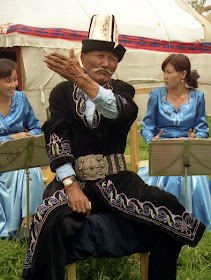 |
| Rakhim Akhmedov's Girl from Surkhandarya 1959 |
At The Crossroads will offer contemporary artworks in various media by artists from across Central Asia and the Caucasus, including Armenia, Azerbaijan, Georgia, Kazakhstan, Kyrgyzstan, Tajikistan and Uzbekistan. The exhibition will showcase non-conformist as well as socialist-realist art from the 1960s, right the way through to emerging contemporary practices.
Uzbekistan will be represented by four artists: Rahim Ahmedov (1921-2008), Murod Karabayev (1963), Jamol Usmonov (1961) and Alexander Barkovskiy (1979). The pieces by these artists have gained international attention and have previously been showcased at art shows in Uzbekistan and abroad.
Kyrgyzstan's Alimjan Jorobaev’s image Mirages of Communism #1, 1994 is included in the sale. This work is part of the photographic series that the artist developed during the turbulence of the breakdown of the Soviet Union, when he travelled his native Kyrgyzstan in search of symbols of the past.
Commenting on this pioneering initiative, Jo Vickery, Senior Director and Head of Sotheby’s Russian Art Department in London, said: “Countries throughout the Caucasus and Central Asia have experienced rapid growth in recent years and this is also true of the art scene there. New collectors, art institutions and galleries are emerging every day, and it is an exciting new geography for Sotheby’s to explore. We are therefore delighted to present this landmark selling exhibition, which encompasses the diverse artistic practices of the region that combine ancient historical roots with techniques at the forefront of contemporary art.”
 |
| Alimjan Jorobaev’s Mirages of Communism #1, 1994 |
The exhibition is co-organised by Uzbekistan’s MEROS Association of Antiques, an art institution founded on the basis of voluntary contributions from collectors and organizations supporting Uzbek arts and the preservation of the country's cultural legacy.
View Sotheby's exhibition catalogue.
Related posts: Alexander Volkov: Of Sand and Silk, an Exhibition at Christie's, London
Central Asia in Art: From Soviet Orientalism to the New Republics
Pablo Picasso and Nadejda Kashina Exhibition in Tashkent




